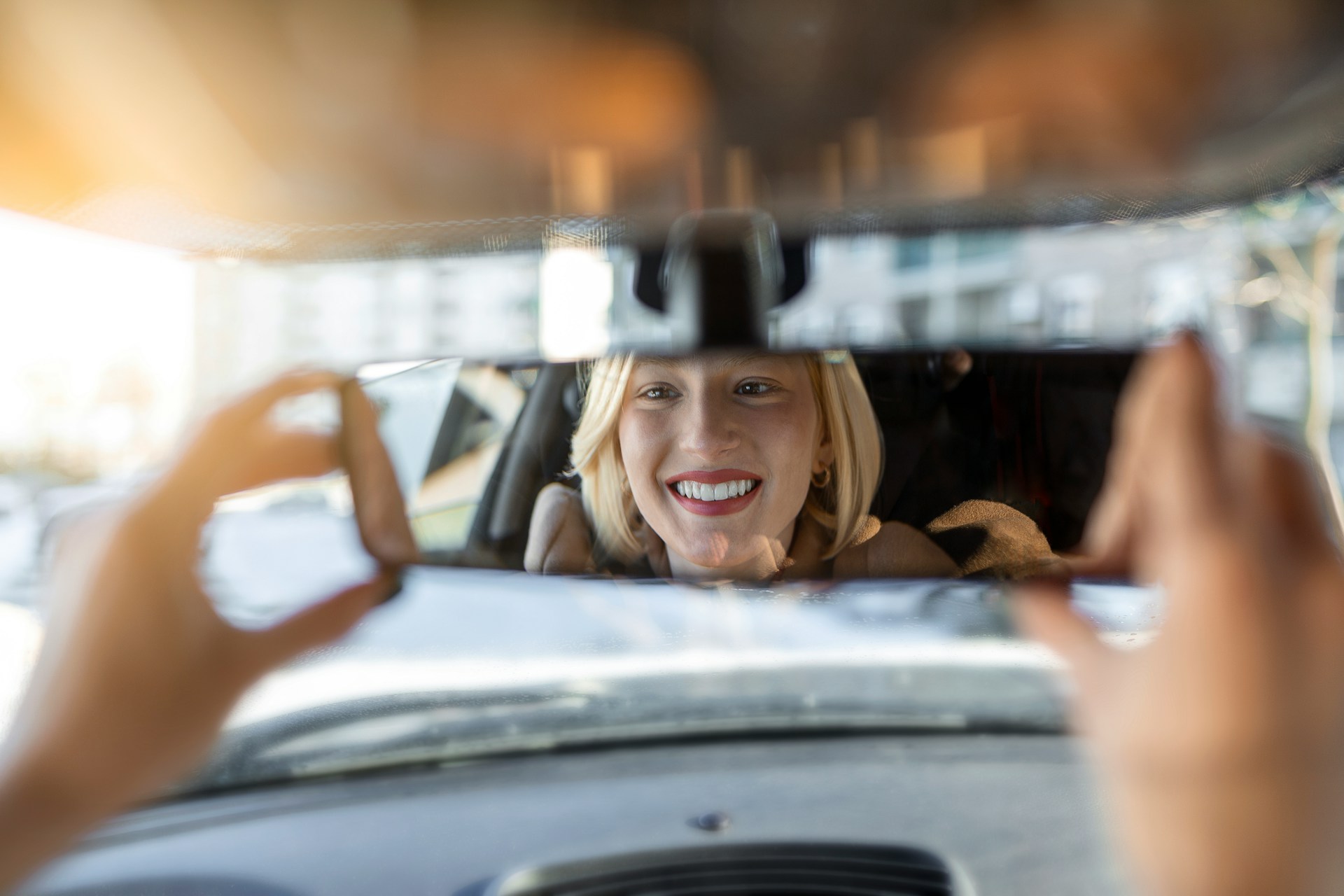
In the driving world, keeping an eye out for what’s ahead is vital, but so too is knowing what’s happening behind and to the sides of your vehicle. Effective mirror usage, including knowing when and how to perform mirror checks, is a fundamental driving skill that every new driver must master.
Driving mirrors serve a powerful purpose in offering a wide field of vision to the driver, allowing you to see other road users, check your vehicle’s positioning, and anticipate potential hazards. Simply put, your rear-view and side mirrors are vital safety tools when used properly. Nevertheless, the use of mirrors in driving is often underplayed or misunderstood, leading to risky situations on the road.
At Drive School Croydon, we’re dedicated to providing educational, informative content to empower our drivers on the road. In this article, we’ll deep-dive into the subject of mirror checks.
Types of Mirrors and Their Functions
To understand the value of mirror checks, it’s important to first look at the different types of mirrors in your vehicle and their specific purposes:
- Rear-view mirror: The rear-view mirror, mounted inside your car, provides a clear line of sight directly to the rear. It allows you to see vehicles and other obstacles positioned directly behind you, while also offering a limited view of adjacent lanes.
- Side mirrors (wing mirrors): Your car’s side mirrors are essential for visualising the areas to the left and right of your vehicle that may not be visible in your rear-view mirror. These mirrors help you check for other road users in adjacent lanes, monitor your distance from the kerb, and anticipate potential hazards from the side.
Each mirror plays a specific role in rendering a comprehensive view of your surroundings. However, understanding the limitations of each mirror and the potential ‘blind spots’ is equally important to ensure a safe and informed drive.
Setting Up Your Mirrors: Optimising for Maximum Efficiency
Before you begin to drive, it is crucial to set up your mirrors correctly, ensuring you have the best field of vision possible. Here’s how:
– Rear-view mirror: Adjust the angle of your rear-view mirror so that you have an unobstructed view out of the back windscreen. Remember to set this while in your natural driving position to guarantee the most accurate view.
– Side mirrors: Adjust your side mirrors externally so that the horizon (where the road meets the sky) runs across the centre of the mirror. Additionally, you should be able to see a small portion of your vehicle in the inner side of each mirror. This way, you’ll maximise your field of vision and reduce blind spots.
By setting up your mirrors correctly, you’ll have a more effective range of vision and can feel more confident while navigating the roads.
Mirror Checks: Timing, Frequency, and Execution
Regular mirror checks are a fundamental skill every driver must adhere to. By checking your mirrors frequently, you enhance your situational awareness and increase your ability to react swiftly and safely to sudden changes in traffic conditions. Here are some key guidelines for executing mirror checks:
– Timing: Ensure you check your mirrors before you press the brake pedal, change lanes, merge onto new roads, turn, or perform manoeuvres like reversing or parking. These checks are vital as they help you identify traffic approaching from behind or on the side, which could impact your planned action.
– Frequency: As a general practice, aim to check your mirrors every 5 to 10 seconds. This frequency allows you to maintain a constant awareness of your surroundings and anticipate upcoming obstacles or changes in traffic.
– Execution: When conducting mirror checks, glance at all three mirrors in quick succession. Start with the rear-view mirror, then examine the side mirror on the driving side, and finally, the passenger side mirror. These three checks should be quick but thorough to ensure you don’t lose focus on the road ahead.
By maintaining a habit of regular, well-timed mirror checks, you’ll develop a heightened awareness of your surroundings, resulting in safer and more responsible driving.
Practical Scenarios and Exercises for Mirror Checks
Mirror checks are a skill that can be developed with practice and repetition. Incorporate these practical scenarios and exercises into your driving lessons or personal practice sessions:
- Highway driving: As you navigate multi-lane highways, practice checking your mirrors before changing lanes, merging, or exiting.
- Urban driving: Improve your awareness of pedestrian activity, parked cars, and other road users by conducting regular mirror checks in built-up urban areas.
- Car park simulation: When practising parking and manoeuvres that require reversing, make a conscious effort to execute mirror checks alongside other observation techniques, like checking blind spots and using turn signals.
Developing muscle memory through these practical exercises will instil the habit of frequent mirror checks, ultimately enhancing your overall driving competency.
Mirrors, a Crucial Tool for Safe and Attentive Driving
The importance of regular mirror checks cannot be overstated. By understanding the different types of mirrors in your vehicle, their specific functions and limitations, and setting them up effectively, you lay the foundation for successful mirror usage.
Combined with frequent, well-timed, and thorough mirror checks, you’ll gain heightened situational awareness essential for safe and responsible driving.
Incorporate practical mirror check scenarios and exercises into your driving lessons, and you’ll soon find that these skills become second nature. By mastering the use of mirrors, you’ll not only improve your own driving but also contribute to a safer environment for all road users. Take the time to develop these habits by enrolling in our courses at Direct Drive Driving School Croydon, home to the best driving instructors in Croydon!
